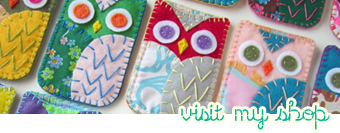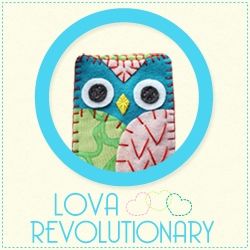
What could be more macho than stalking thrift stores for deals on designer clothing?
By John LippmanJanuary 25, 2009
It cost me $44.93 to look like a million bucks.
That's how much I spent on the resplendent sampling from my wardrobe I'm currently wearing. The outfit would have easily cost more than $1,000 -- if purchased new from brand-name stores. But the garments all came from thrift stores.
My suit, a charcoal-gray herringbone in mint condition from Brooks Brothers, cost $12.95. A like-new, spread collar, sky-blue dress shirt from Banana Republic cost $2.99. My tie, a rich paisley by Ralph Lauren, was $1.99. A pair of Cole & Haan black wingtips set me back $12.
The suit wasn't perfect. The jacket sleeves were too long. For $15, my trusted tailor, Moses, shortened them for a perfect fit.
I'm a thrift store clothes addict. That makes me a bit of an exception to my gender, based on what I've seen at thrift shops and vintage clothing stores over the years. So, men, here's a chance for you to benefit from something women have known for years: There are great bargains in thrift store clothes if you know where and how to look.
Linda Stephens, who runs the Huntington Collection thrift store in Pasadena, agrees that men have largely avoided shopping for secondhand duds.
"But that is changing because the economy is bad," she said. She's noticed a brisk traffic of men coming through the store looking for shirts, shoes and $25 suits.
"We're talking $1,000 these days for a good men's suit," she said. That's new, of course.
At least 90% of my suits, sport coats, shirts, ties and shoes were purchased at thrift stores. I draw the line at socks and underwear, but I have picked up suspenders, cuff links, hats and even cutaway tails and morning trousers (a newsman must be prepared) in the resale market.
All of these purchases are of the highest quality. I like well-made clothing, but I dislike prices that require me to be well-heeled. If I had purchased my clothes new, the tab would have easily jumped into the thousands. But my annual total wardrobe investment, as a result of strategic thrift store shopping, runs less than the cost of a couple of suits at Nordstrom's.
Soaring sales
As the recession cuts deeper into our wallets, more people appear to be buying preowned fashions. A survey of members by the National Assn. of Resale and Thrift Shops showed a jump of more than 35% in sales during September and October compared with year-prior levels.
But it didn't take a recession to get me into thrift stores.
Years ago I fell into the habit of acquiring things that had previous owners. It began with stocking my library with books from used bookstores. Next came the purchase of a used -- excuse me, "preowned" -- car.
Then one day, having time to kill, I strayed into a Goodwill store in Pasadena next to the tire shop where my car's flat was getting fixed. Noticing a rack of suits, I slipped on a couple out of curiosity. To my surprise, they fit, were in excellent condition and cost less than a week's worth of lattes from Starbucks.
To start shopping for secondhand clothes, you need to know the terrain.
First, all thrift stores are not created equal.
At the bottom of the pecking order are the ubiquitous Goodwill Industries and the Out of the Closet stores, which tend to put anything and everything on the rack. As a result, finding a high-quality suit at one of these stores is a bit like finding a needle in a haystack.
On the middle-and-upper end of the scale are the thrift shops operated by charities, including the Council Thrift Shops run by the National Council of Jewish Women, the House of Return operated by Beit T'Shuvah charity and the American Cancer Society's Discovery Shops. These stores often stock designer clothing donated by well-heeled members, not just someone's old socks and T-shirts.
At the upper end are specialty vintage clothing stores, such as Aardvarks and It's a Wrap, which sells studio wardrobe clothing at steep discounts, though at higher prices than a nonprofit organization would.
I steer clear of EBay, arguably the world's biggest thrift store. It's always a risk to buy clothing without trying it on first. A satisfying winning bid doesn't count for much if the jacket or slacks ultimately don't fit.
What's it worth?
Next, you need to know the going rates.
Thrift store economies mean you should generally be able to buy a suit for under $20, a sport coat for around $12, pants for no more than $10 and shirts for no higher than $6.
At some thrift stores a high-end, brand-name suit can run $30 to $40 -- and in some instances even more than $100. But all the prices tend to work out to 10% to 20% of an item's value if purchased new.
A quick check lays out the savings. A new Brooks Brothers suit can run around $1,000; a new Polo herringbone blazer commands about $1,300; a new Hickey Freeman suit can sell for more than $1,500; and a J. Press suit is about $800. These are not newsman-friendly prices, especially if a newsman desires to own more than a single garment.
But I recently scored that herringbone Brooks Brothers suit for $12.95 at the Goodwill on Fairfax, and a J. Press chalk pinstripe for $29.95 at Out of the Closet in Glendale. If I didn't admit these facts in print, none would be the wiser.
There are also some land mines out there.
For starters, give the article of clothing a close inspection, looking for holes, tears and stains -- especially on those pinstripe suits. I'm still smarting from the time I paid $19 for a Paul Stuart seersucker suit only to discover a hole in the trousers the size of a quarter.
Questionable merchandise is usually not a problem at upper-end thrift stores, but pay special attention at the chains that stock everything.
The best days to find new inventory are Monday and Tuesday because that's when the weekend donations make it onto the floor.
And, between you and me, the best thrift stores tend to be located in upscale areas. You're more likely to find that $1,000 suit in Beverly Hills than in, well, you know where.
It's also important to be patient. If you're going to buy your clothes at thrift stores you have to put up with the sometimes frustrating task of inspecting racks brimming with discardable items to find the genuine, quality article. After all, 99% of the clothing in a thrift store is probably not something you would ever want to wear.
'Keep coming back'
"It's about the treasure hunt," says Arlene Ford, a manager at House of Return in Culver City. "It's not like shopping Ross or Nordstrom. You have to keep coming back."
"It doesn't work for the guy who has to show up tomorrow morning in a business suit looking perfect," Ford said. "That's part of the joy of people coming back day after day. Thrift-store shopping is more of an experience."
In my years of shopping secondhand, I've learned that the common perception that thrift stores are stocked with raggedy clothes meant for the destitute is just plain wrong.
The truth is, most of the men's clothing found in these stores is perfectly acceptable.
"Women are the deciders," says Ford at the House of Return. "They are the ones who go through their husbands' closets and decide when [their spouses] are done with it."
john.lippman@latimes.com

































No comments:
Post a Comment